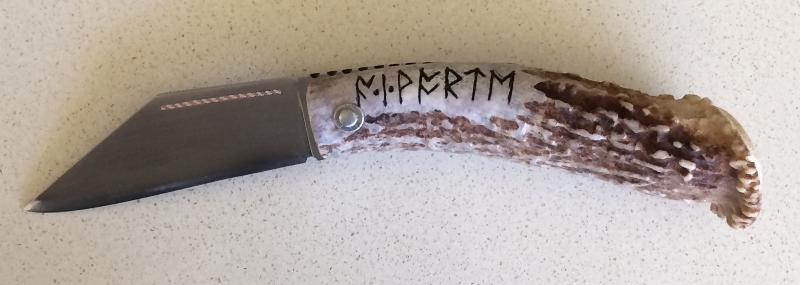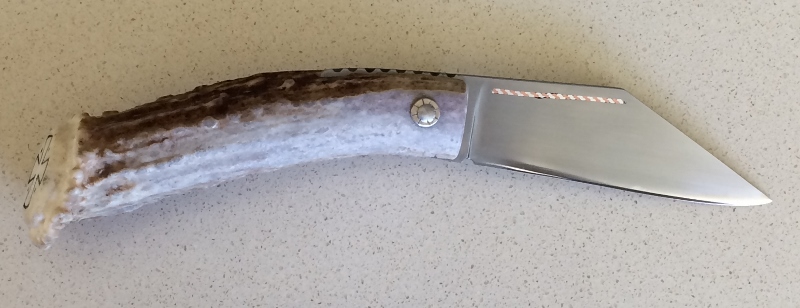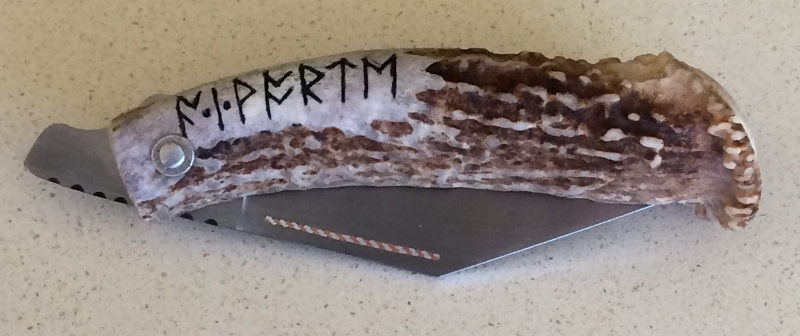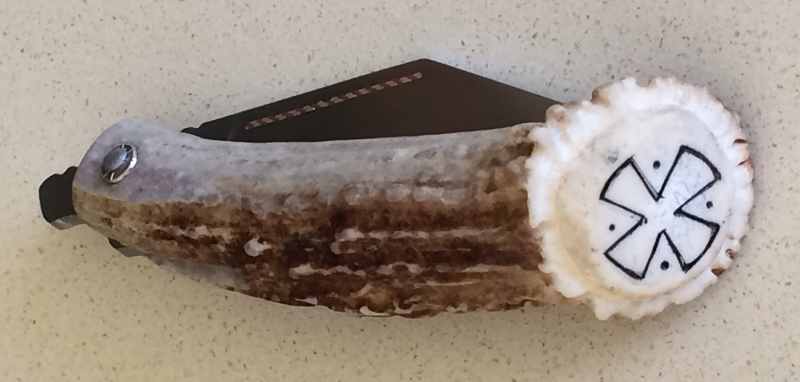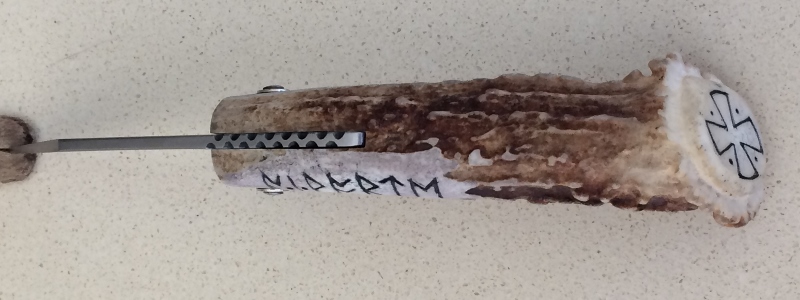This is not exactly a reproduction of any historical type, but a combination of two with a bit of fantasy thrown in. I combined a small seax blade (almost exactly same dimensions as the famous Osmund seax from the Museum of London) with a friction folder handle made of deer horn.
I am not sure if friction folders were known in Anglo-Saxon England, but there is definitely one (with a thick one piece wooden handle) dated to XIIIc published in “Knives and Scabbards” by Museum of London.
According to same book (though it intentionally doesn’t cover seaxes), the old broken back seax form still appeared (very rarely) even in post Conquest times, say XIIc. And blade decorations in that period tended to be minimal (like one or two grooves, sometimes with inlay) and applied symmetrically to both sides.
So my imagined story is that some knifesmith in XIIc England decided to use the still remembered ancestral seax blade profile for a folder. But the copious full surface inlays of old seaxes are now out of fashion so he went with the currently acceptable one line inlay on both sides (but of twisted silver and copper wire, as a reference to older decoration techniques). As another reference to old times, he engraved in the handle an inscription in Anglo-Saxon runes (let’s say he consulted a learned monk on spelling).
Anyway, historical justifications aside, it was a very interesting project for me. I tried two new techniques: using deer horn as folder handle, and putting soft metal inlays in a blade. Both worked out pretty well.
There is no sideways play in the blade at all, and just enough friction to hold it open or closed. I can actually manage to open and close it one handed.
Inlay is secure and looks nice with just a couple small hairline gaps (apparently I cut the groove too deep in places). I am thinking of trying a normal fixed blade small seax with much more extensive inlays as a future project.
Blade is 3 ¼” long, 1” at widest point, 1/8” thick. Handle approximately 4 ½” long.”
Made by stock removal from 1095 steel, quenched in oil (I made it a differential quench, leaving back soft), and tempered. Finished to 600 grit, with shaving sharp polished edge (very slightly convex shaped).
Inlay of twisted together 24 gauge fine silver and copper wires was hammered in after the blade was heat treated, but the grooves for it were cut before. Don’t know if this is the right way, but it worked for me (I chose this approach because I was afraid that the back of heat treated blade may end up too hard for cutting grooves).
Handle about 4 ½” long, of deer horn with “crown” forming the butt.
Anglo-Saxon runic inscription says “A.I. (my initials) WORTE (made)”. I didn’t have to go looking for learned monks to find out how to spell it. I just used a book (“Runes”, published by the British Museum).
On the butt I engraved a cross of a shape I saw as part of some Anglo-Saxon runic inscriptions. Since I don’t have any artistic inclination for more complicated designs, it had to be something simple, and since the period was supposed to be relatively late, symbols of pagan origin (like Odin’s knot) were rejected.
An interesting thing that I noticed only after finishing the knife is that it feels more comfortable in left hand (because of how the crown is oriented). Not that it is can’t be used right handed, it is still comfortable enough (I am right handed, BTW).
Small pictures attached, bigger versions can be seen at https://public.fotki.com/aindman/friction-folder-wit/
Alex.
